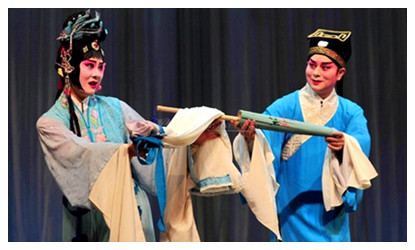Skype: neodalle-travel
Tel: +86 135 7447 2266
E-mail: sales@visitaroundchina.com
 Due to its Zhongzhou rhyme and Changsha mandarin, it is also named Changsha Xiang Opera. Hunan's operas include Qi Opera, Chenhe Opera, Hengyang Xiang Opera, Wuling Opera, Jinhe Opera, Baling Opera, Xiang Kun, Changsha Flower Drum Opera and Shaoyang Flower Drum Opera.
Due to its Zhongzhou rhyme and Changsha mandarin, it is also named Changsha Xiang Opera. Hunan's operas include Qi Opera, Chenhe Opera, Hengyang Xiang Opera, Wuling Opera, Jinhe Opera, Baling Opera, Xiang Kun, Changsha Flower Drum Opera and Shaoyang Flower Drum Opera.Hunan Province is also known as "Xiang". In Hunan Province, The Xiang Opera, a major, local opera, was formed during the Ming Dynasty (1368-1644). The opera was mostly performed in the provincial capital Changsha, and in nearby Xiangtan, hence the name Changsha Xiang Opera. It has 12 types of roles such as Sheng (male role), Dan (female role), Chou (clown or comic role), and 'flower-faced' roles (a popular name for jing or male roles, because of the elaborate facial painting used). Non-martial scenes are accompanied by instruments like flutes and yu-kin, an ancient stringed instrument, while percussive instruments accompany martial scenes.
The well-known Hunan Huagu Opera is the general name for minor, local opera genres in Hunan Province. Derived from Hunan folk songs, it has developed from a two-role drama (a female and a clown) to a three-role drama (a young female, a young male and a clown). There are more than 400 traditional plays and 300 tunes in its repertoire, of which "Liu Hai", "The Firewood Cutter", and "Flying Kite" won prizes at the national level. Small Suona and percussions are the main accompanying instruments. In terms of modern operatic creation, plays of influence include "Sister and Sisters-in-Law" during the 1950s and "Father Luosi Buying an Ox", during the 1980s.
 Ask Questions ?
Ask Questions ?